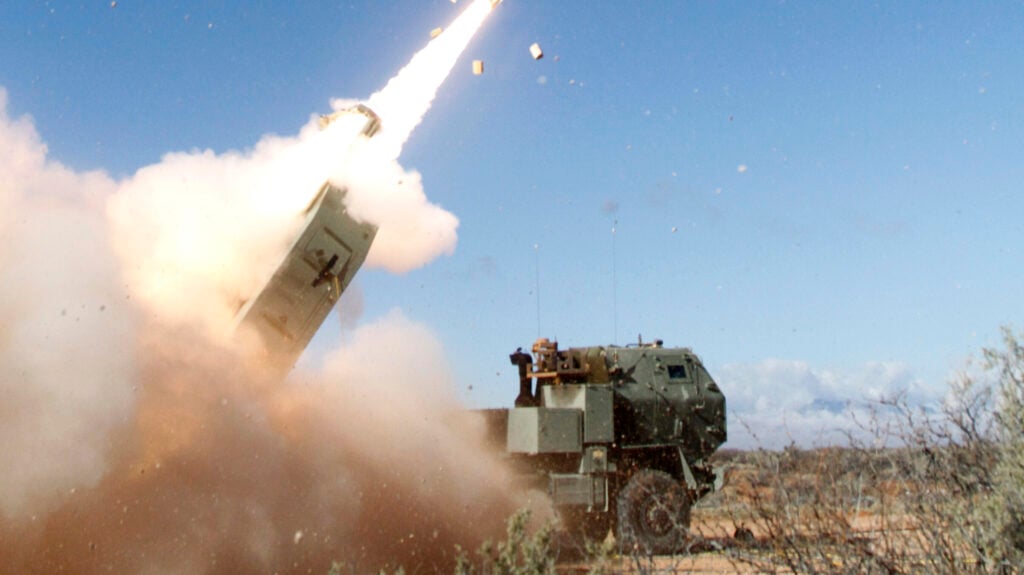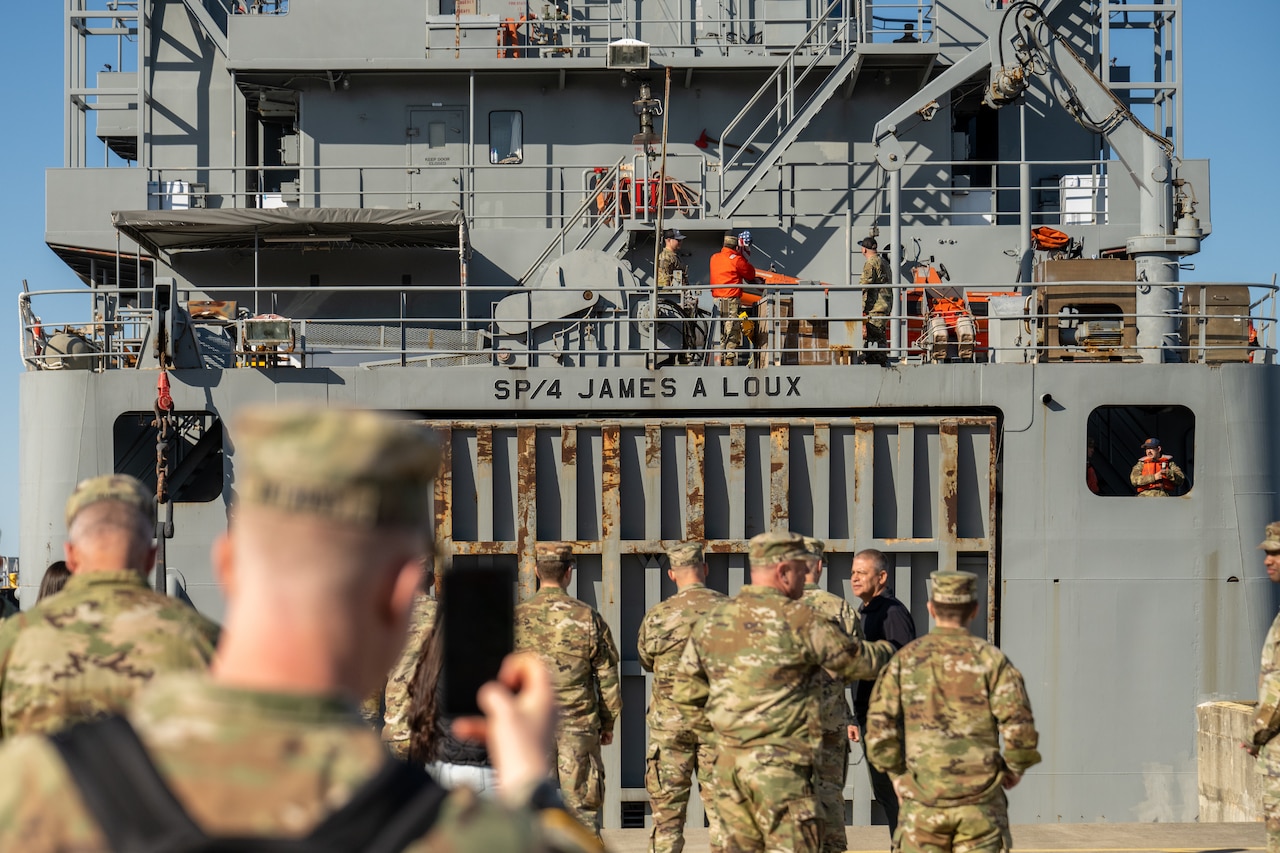Lockheed’s prototype Precision Strike Missile (PrSM) fires from an Army HIMARS launcher truck. (US Army)
CANBERRA — While some facets of age-old conflict have carried on into modern war, the head of the British army said that with the fight in Ukraine, the military world is witnessing what could almost be described as a “Cambrian explosion of autonomous systems” and the stunning proliferation of countermeasures used against them in real-time.
It is an “extraordinarily progressive and an almost revolutionary change in some of the character of war,” Gen. Patrick Sanders, chief of the General Staff, told an audience at a CSIS event Tuesday. “Now, not all of them are working effectively. Up to 80 percent of the drones during one period recently, simply were not getting through because of an extraordinarily contested electromagnetic spectrum and effective Russian use of electronic warfare.”
The event, featuring Saunders as well as the heads of the American and Australian armies, was held to discuss how the land forces of the three nations can best benefit from AUKUS Pillar 2. Pillar 2 is a loose agglomeration of advanced capabilities that the nations are pursuing, focusing on areas such as automation and artificial intelligence, quantum computing and hypersonic missile technology.
Officials have not shared how exactly these technologies will be acquired or disclosed timelines for development or entry to service, but Sanders’s comments are useful as a marker of how senior leaders are approaching technological leaps on the battlefield.
Saunders said that the success of Russian EW pointed to a “very significant change and that of course, is enabled by data and by being able to freely flow data from sensors through to deciders, through to effectors and across all domains.”
Likewise, he discussed how Ukrainian forces, lacking a navy and possessing a limited air force, have nonetheless kept both domains at bay using data and autonomous weapons.
Sharing data at machine speed with long-range fires weapons, especially, is where AUKUS Pillar 2 can see its speediest successes for land forces, Sanders and his colleagues from Washington and Canberra said.
“A lot of our conversations over the last sort of couple of days have come back to our ability to share data at machine speed,” said Gen. Simon Stuart, chief of the Australian Army. “So you know, how do we communicate and share data because to actually deliver on the theory of any and every sensor, any decider and the best effector and then the optimal sustainer you need to be able to operate at machine speed and you need to get the right data in the right place at the right classification.”
Though a daunting technical challenge, Sanders outlined a recent demonstration at Camp Pendleton, likely a reference to the US Army’s Project Convergence, that tied together an Air Force sensor, a commander and linked it to all the way to Australia.
“Just last week in Camp Pendleton, you saw a perfect example of that where we were able to take data from an Air Force sensor — which we previously wouldn’t have been able to do, not least because of levels of classification — and exchange it and pass it through a decider and then to an effector, both a British effector and an Australian effector, and the Australian effector was actually located in Australia, and that was done in machine speeds,” Saunders, the British general said, offering an example of what the Pentagon calls Combined Joint All Domain Command and Control (CJADC2).
Among the key reasons for moving data at speed to long-range fires systems is to build “human-machine teaming,” the Aussie Army chief said. “They give us scaling and mass advantages, but also because our people are our most valuable asset, how do we move them away from the point of contact? I do not want to be putting our soldiers into a fair fight. I do not want to be trading blood in the counter-battle if we can put machines out of front to do that — ever.”
The US Army chief, Gen. Randy George, offered an intriguing possible win for AUKUS Pillar 2, leveraging “a common controller” for unmanned systems that would allow the three allies to exchange systems.
In addition to that, he said he’s been talking to Congress about the Army having more flexibility to buy things because electronic warfare and drone software often needs to be updated every “three weeks or three months” and move from research and development more quickly.
“That’s been very hard for us to do right now, for example, with a continuing resolution as far as moving things around,” he added.
As for those long-range fires, Sanders said that Ukraine’s effective use of that capability has clear implication for any fight that might break out in the Pacific.
“So, a land-based missile, PRSM, being fired out of a $30,000 — not a $100,000,000 platform — one which is hard to find, can reach out to previously unthinkable distances and target a maritime platform,” he said. “So that gives you a sense of how I think the innovation that we’re seeing, being developed in places like Ukraine, has got direct transfer and applicability into the Indo-Pacific.”
PRSM is, of course, fired from a HIMARS mobile launch vehicle, of which Australia is expected to buy 20.
Because at the end of the day, all the data sharing in the world won’t help unless the armies can hit their targets. That’s been true for centuries.
“A lot of the lessons that you see come out of Ukraine remind us … about this simply being the nature of war,” Saunders said.





















Discussion about this post